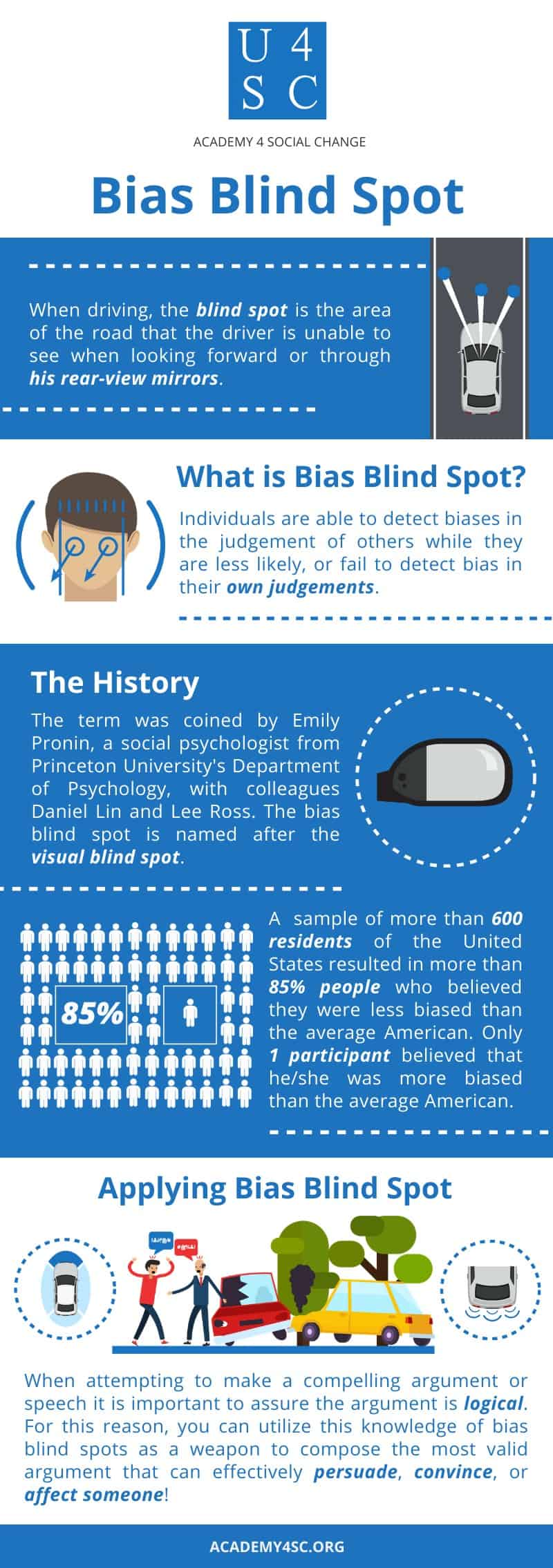Have You Ever?
Have you ever been a passenger in a car in which the driver realized they missed their exit? Now the driver needs to get into the far-right lane to get off the highway. The driver puts their blinker and looks in the rear-view mirror and sees no other cars to the right of his car. However, as he begins to change lanes, you both hear a loud honk. You look out the window and see there is a car in the driver’s blind spot.
Explanation
When driving, the blind spot is the area of the road that the driver is unable to see when looking forward or through his rear-view mirrors. This is the same with a bias blind spot; the individual is unable to see how biases affect his judgment and can ultimately affect his decision making just like the blind spot affects when the driver decides to change lanes.
Bias Blind Spot
Individuals are able to detect biases in the judgment of others while they are less likely or fail to detect bias in their own judgments.
The History
The term was coined by Emily Pronin, a social psychologist from Princeton University's Department of Psychology, with colleagues Daniel Lin and Lee Ross. The bias blind spot is named after the visual blind spot. In a study, a sample of more than 600 residents of the United States resulted in more than 85% people who believed they were less biased than the average American. However, only 1 participant believed that he/she was more biased than the average American.
Applying It
When attempting to make a compelling argument or speech, it is important to ensure the argument is logical. In order to present the best argument, be aware of potential biases that can affect your judgment and reasoning. For this reason, you can utilize this knowledge of bias blind spots as a weapon to compose the most valid argument that can effectively persuade, convince, or affect someone!



